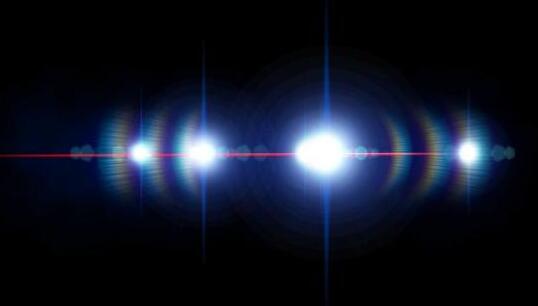The difference between printing light source and living light source
An object that can emit light by itself is called a light source, and it is an indispensable role in human life. There are many types of light sources, and their shapes are different, but they can be divided into natural light sources and artificial light sources. The largest natural light source is the sun. Humans live and work under the sun. As the saying goes, "Everything grows on the sun", the whole nature is bathed in its brilliance. Due to the needs of life and production, humans have successively developed various artificial light sources that simulate sunlight, such as torches, candles, kerosene lamps, steam lamps, and many electric light sources such as incandescent lamps, fluorescent lamps, halogen lamps, xenon lamps, high-pressure mercury lamps, and high-pressure sodium lamps.

Let us first take a look at the common performance indicators of electric light sources.
Different light sources, luminescent substances and principles are different, and their spectral composition and energy distribution are also different. Usually a spectrophotometer is used to measure the radiant energy value of various light sources emitting colored light in different wavebands, so as to draw the relative spectral energy distribution curve of the light source. According to the characteristics of the light source curve, the spectrum can be divided into three categories: one is the continuous spectrum, which emits continuous spectral lines including various colored lights in the visible wavelength range, such as the sun, incandescent lamp, and halogen lamp; followed by the linear spectrum , Emits narrow, discontinuous lines only at a certain wavelength or a few wavelengths, such as lasers, high-pressure sodium lamps, and high-pressure mercury lamps; the third type is mixed spectrum, which is a continuous spectrum mixed with linear spectrum, such as fluorescent lamp. The printing industry usually uses two types of continuous spectrum and mixed spectrum.
In addition to the spectral type of the light source, we usually pay more attention to the two important color indicators of the color temperature and color rendering of the light source.
Color temperature, referred to as color temperature, is a measure of the color of light emitted by a light source, and it has nothing to do with the temperature of the light source itself. A certain spectral energy distribution is expressed as a certain light color, and we use temperature values ​​to represent the characteristics of the color of the light source. The color temperature of the light source is measured by comparison with the absolute black body. The absolute black body is made of refractory metal. When it is continuously heated, the temperature will continue to rise. The light emitted will gradually change in the order of red, yellow, white, and blue. Use it as a reference to calibrate the color temperature of the light source: The color of light emitted by a light source is compared with the color of light emitted by an absolute black body heated to a certain temperature. The temperature value corresponding to the same or similar light color is the color temperature of the light source. The color temperature is expressed in absolute temperature. The absolute temperature value is 273 higher than the Celsius temperature. That is, when the Celsius temperature is 0 ° C, the absolute temperature is 273K. For example, the white daylight at noon is the same as the light emitted when the blackbody is heated to 6000K, and the color temperature of the sunlight at this time is 6000K. The color temperature of blue sky in Tibet is up to about 8000K, the color temperature of 60W incandescent lamp is about 2800K, and the light color is yellowish. The color temperature of fluorescent lamps is generally around 6500K, with a faint blue smell. The electric light source used in the printing industry is mainly used for lighting and plate-making exposure. The color temperature of the light source is required to be 5000-6000K, and the life light source depends on the purpose. For example, if you want to cool down in summer, you can choose a light blue light source with a high color temperature for indoor lighting; if you want to get a warm effect in winter, you can choose a yellow light source with a low color temperature.

The color rendering of the light source is an index to measure the visual quality of the light source. The quality of the color rendering directly affects the color of the objects observed by people. Looking at the same object under daylight and other light sources, the color will be different. For example, blue clothes seen in daylight become blue-purple under high-pressure mercury lamps and black under yellow high-pressure sodium lamps. It can be seen that high-pressure mercury lamps and high-pressure sodium lamps make objects lose their true colors, which requires Use the color rendering index Ra for quantitative description. The color of the object is most accurate in daylight. Therefore, using sunlight as the reference light source and using various artificial light sources as the light source to be tested, the degree of the color developed under the light source to be tested matches the color developed under the reference light source. It is the color rendering property, and the color rendering index Ra is used as a quantitative evaluation index. The highest color rendering index is sunlight, Ra100, and the level of color rendering index indicates the degree of distortion of the object under the light source to be measured. Generally light sources with continuous spectrum such as sunlight, incandescent lamps, halogen lamps, xenon lamps, etc. have good color rendering. The light source can be classified according to the color rendering index. The light source with an Ra value of 100 ~ 75 has excellent color rendering and is suitable for use in the printing industry; when the Ra value is 75 ~ 50, the color rendering is general and can be used for life lighting. For example, many street lamps are such light sources .
All in all, the performance index of the light source used in the printing industry is higher than that of the living light source.
Hot reading:
Printing in the Internet era relies on spraying, inkjet printing leads the era of innovative hybrid screening, skillfully taking advantage of AM and FM screening Digital watermarking technology in the anti-counterfeiting of printed materials, the basic functional module, the types and work of laser phototypesetter principle Contribution Hotline (QQ) Liu Yiyun (click the number for one-click enquiry) 
Editor in charge: Liu Yang
This catagory includes various Pet Products.
Pet Products A
YRX Technology (Shenzhen) Co., Ltd. , https://www.yrx-tech.com